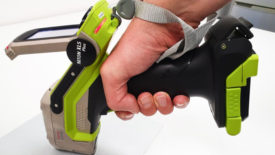Home » x-ray fluorescence
Articles Tagged with ''x-ray fluorescence''
NDT
Enhancing NDT Applications with XRF and LIBS Technologies
Read More
XRF
Achieve RoHS Compliance: Uncover Heavy Metals, Flame Retardants, and Phthalates with Handheld XRF & FT-IR Spectroscopy
Many manufacturers have incorporated handheld XRF and FT-IR testing into their workflows to ensure regulatory compliance.
February 21, 2025
NDT | XRF
Combining X-ray Fluorescence, Infrared Spectroscopy and Software Algorithms for Positive Material and Contaminant Identification
In an ideal situation, every contaminant and raw material would have its own XRF and FTIR spectrum, which can be used to compare to unknown contaminants or incoming materials.
September 11, 2024
NDT | XRF
Ensuring the Quality of Lithium Ion Battery Manufacturing Amid Surging Demand
As the demand for Li-ion batteries continues to rise, efficient manufacturing and recycling practices become imperative.
July 11, 2024
NDT | XRF
From Lab to Line: Evolution of XRF in Manufacturing Quality Assurance and Control
The versatility of XRF technology extends across a wide range of industries, including automotive, aerospace, electronics, pharmaceuticals, and more.
May 15, 2024
NDT | XRF
Enhancing Automotive Safety With Real-Time Composition Analysis
It is crucial that the compositions of metals and alloys used in automotive fasteners are verified through stringent quality assurance.
April 14, 2023
NDT | XRF
How to Measure Metal Coating Thickness Using Handheld X-ray Fluorescence Analyzers
Handheld XRF is an indispensable tool in quality assurance that provides multiple benefits.
February 8, 2022
Back 2 Basics
The 101 on XRF Analyzers
Experts share details on the ins and outs of this technology
April 8, 2021
Handheld XRF, OES, and Portable LIBS Analyzers— Which One Is Best for Your Needs?
Understanding the limitations and differences in each of these techniques is critical when performing material analysis.
June 24, 2020
Stay in the know with Quality’s comprehensive coverage of
the manufacturing and metrology industries.
eNewsletter | Website | eMagazine
JOIN TODAY!Copyright ©2025. All Rights Reserved BNP Media.
Design, CMS, Hosting & Web Development :: ePublishing








.jpg?height=168&t=1621530074&width=275)

